HALL OF FAME
INDUCTED IN
2008
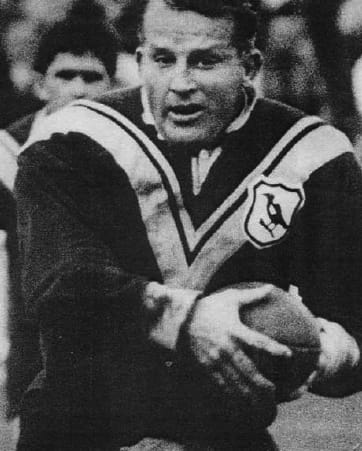
No Magpies Hall of Fame could possibly exist without Ned. Equally at home at Hooker or Prop at Club or Test level, Kelly was a hard man on the field and a larrikin off it. The Australian Team of the Century Hooker is every Magpie’s favourite Queenslander. The young Ipswich star had already established himself as a Kangaroo tourist before he joined Wests in 1961. Once here, he became the backbone of the Magpies until his retirement in 1969. He became the first forward to make three Kangaroo tours in 1967. Ned was selected in the prestigious Australian Rugby League Team of the Century in 2008.

He’s had many nicknames over the years, but simply mention ‘Tommy’ to any league fan and they will instantly know who you are talking about. Raudonikis was a Magpie institution from 1969-79. Epitomising the ‘Fibros’ era of the club Tommy had plenty of skill, but it was his toughness and unmatched will to win that made him a hero at Lidcombe and feared by opponents. Virtually unchallenged for the Australian No. 7 jersey for a decade Raudonikis played 202 First Grade games for the Magpies and returned to coach the club in 1995-1999.
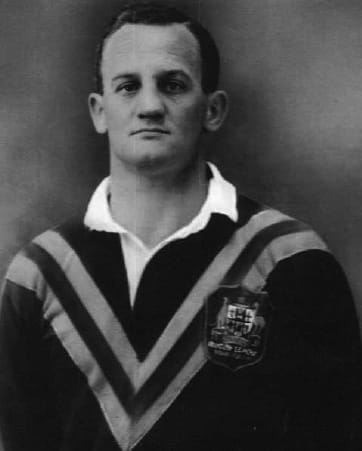
The Magpies will always have a special place in the iconography of Rugby League thanks to Arthur Summons. The famous image of ‘The Gladiators’ capturing opposing Captains Norm Provan and Summons in an embrace at the end of the 1963 Grand Final has come to define the spirit of the game and continues to this day to be venerated as a symbol of all that’s great about Rugby League through its use on the NRL Premiership Trophy. After switching to League from Union, Summons proved himself to be a very fine half or 5/8 in the Club and Test arenas and his ability was rewarded by being named the Captain Coach of the great 1963 Kangaroo touring side.
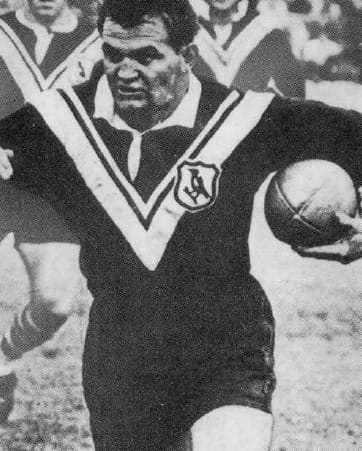
A feared winger during the 60’s Peter Dimond played 157 First Grade games for the Magpies from 1958-67 scoring 83 tries. Adored by the Wests faithful for hardness as much as his skill Dimond played 10 Tests and four Grand Finals for the Magpies (58, 61, 62, 63).

Jim was there at the beginning, attending the founding meeting of the club on Feb 4 1908 and being elected to the inaugural committee. He also played in Wests very first game against Balmain and scored Wests very first goals in First Grade in the following match against Souths. Jim played all nine matches of the inaugural season and at the end of the season was rewarded with membership on the first Kangaroo tour to England. Abercrombie became Wests first International, playing the first two Tests against England.

No one would be surprised that the great Keith Holman should be the first Magpie announced as a member of the Magpies Hall of Fame. After 203 First Grade games from 1948 to 1961, coaching the side to the AMCO Cup in 1977 and a lifetime of contribution to the club Keith Holman is Western Suburbs.
INDUCTED IN
2009

From the time the “Cootamundra Kid” first hit Sydney he made headlines with his powerful running and aggressive tackling. Quietly spoken off the field, he never took a backward step on it. The aggression often saw him targeted by the judiciary. For instance, in 1978, he had a suspension overturned in equity court on the basis of being denied ‘natural justice’, only to be retried and found guilty of the same charge. Coming to Wests in 1976, he played 68 games for 24 tries, before transferring to Manly in 1980. An 18 month suspension effectively ended his Sydney career and he had a successful stint at Warrington before coaching at Cootamundra and Harden-Murrumburrah. Magpie supporters will never forget the explosive Boyd. He was rightly named as lock in the Magpies Team of the Century.

In 1972 Roy, while a teacher, was appointed coach of the Australian Schoolboys side that tour Great Britain, undefeated. In 1976 he joined Wests to coach the U23’s to a premiership victory. When appointed head coach in 1978 he transformed the Magpies into a winning outfit, remarkably claiming the minor premiership after years in the wilderness. Noted as great motivator and tactician, the magpies played an exciting and tough brand of football under his leadership. He left Wests in 1982 to coach St George until 1987. During his time he was voted Dally M Coach of the Year in both 1980 and 1985. He has also had a distinguished career as a sports journalist mainly with the Sydney Morning Herald, culminating in an award of the Australian Sports Commission Media Award for Lifetime Achievement. Players such as Tommy Raudonikis, Les Boyd and Dallas Donnelly gave their all for Roy every time he asked them for that extra effort.

Arthur Clues was a product of Parramatta Rugby Union and a very capable grade cricketer. He joined Western Suburbs in 1943 and within three years had established a reputation as a tough but creative forward. He was very tall for a second-row forward but was a powerful runner with a deceptive mid-field sidestep. He was a NSW Representative in 1945-6 and also played in all three Tests against Great Britain in 1946 before becoming one of the first post-war Australian players to sign with a wealthy English club. He played with Leeds for eight seasons (including the 1947 Challenge Cup Final) before seeing out his career with Hunslet (1954-7). In the early 1950s he was regarded as the best forward in Britain.
He played 50 Premiership games with Wests, scoring 17 tries and kicking 2 goals.

“Joe Cool” earned his nickname from never seeming to be under pressure in a game, whether it was fielding high bombs or making try-saving tackles. He was a great kick and chase expert, using his deceptive speed and swerve to his advantage. He was hampered by a lot of knee and neck injuries but from 1974-9 still played 102 Premiership games for 29 tries and 229 goals for 547 points – a remarkable achievement for a player often in pain. When he returned to the Steelers and in four seasons scored 463 points. He finished his playing career with Hull in England.

In a long career, Frank played for Wests 1921-4 and 1926-35, playing one season for Balmain in 1925. He represented NSW 22 times and Australia nine times. He starred in the 1929-30 Kangaroo tour, so much so he was names captain/coach of the 1933-34 Kangaroos. He began the concept of the “running” fullback, often using the scissors movement to great effect. He was a renowned wet weather fullback and a prodigious kicker; often kicking field goals from half-way. He played 147 First Grade games for Wests, scoring 238 points. He was deservedly named at fullback in the Western Suburbs team of the century.

After a great career with Canterbury (1948-53), Neville Charlton came to Wests in 1954, leaving in 1962 to play two seasons with Easts. In those eight seasons with Wests he became a crowd favourite with his rugged up-the-middle runs and bone-shaking defence. His fiery demeanour never saw him backing away from the hard stuff. He played in the 1958 and 1961 (as Captain) Grand Finals in losing teams.

Tedda Courtney is one of League’s legendary players. He played more Tests and more matches than any other player in the pioneering era. He played long enough to win his bet – that he could remain in First Grade long enough for his son to play alongside him. On June 14, 1924 at Pratten Park, the Courtneys created history, becoming the first – and only – father and son to play alongside each other in First Grade in the NSW Rugby League premiership. The opponents were Glebe and Wests won 29-11.
He played for Newtown in 1908 and North Sydney in 1910 but in 1909 and 1911-24 played for the Magpies. He was a member of the first rebel group and was selected for NSW in the second match against Baskerville’s New Zealand All Golds in August 1907. In a stellar International career he played for the 1908-9 and 1911-12 Kangaroos , two Tests against the 1910 English tourists and three against the 1914 English Tour team. He was renowned as a ferocious tackler but was also a remarkably endurable forward. He played 162 First Grade games and 24 City Cup matches for Wests, only missing one game due to injury. The only time he left the field was when he was carried off on a stretcher – a true ‘iron man’ of rugby league.

Harry “Dealer” Wells played with Wests from 1956-61, captaining them in their 1958 Grand Final loss to St George. He was already a Kangaroo before joining Wests and a premiership winner with Souths in 1951. All up he played 37 Tests for Australia and 85 First Grade games for Wests. A renowned powerful and deceptive runner, he was named in the list of Australia’s 100 Greatest Players and easily has the reputation as one of Wests best ever players.

Many good judges from yesteryear will tell you that Vic Hey was the greatest player to ever pull on a boot. He was noted for his vicious defence but was also a dashing attacker when needed. He debuted for Wests in 1933, making the 1933/4 Kangaroos as a late replacement but then playing blinders, combining with Wests team-mate “Mousey” Mead at the scrum-base. The lure of big payouts led him to Toowooba in 1936 and then Leeds in England (two Challenge Cup wins 1941-2). He coached Wests in 1958-9 and had an impressive result as coach of Australia in 1950 when the Ashes were won back for the first tine in 30 years. When Vic Hey pulled on a five-eighth jumper a win was assured more than 70% of the time. He deserved the nickname of “The Human Bullet”.

When Kel O’Shea came to Wests in 1956 he was already an Australian representative. He represented Australia 20 times all-up during his 108 game career with Wests. He was regarded as one of the most difficult forwards to tackle in the history of Rugby League, his powerful frame knocking off would-be tacklers on many probing runs. He was named as a second-rower in the Western Suburbs Team of the Century and also in the list of Australia’s 10 Greatest Players (1908-2007)
INDUCTED IN
2010
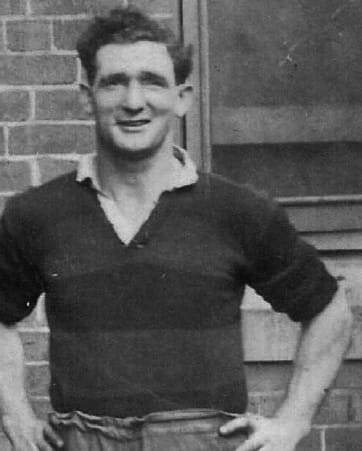
Dick was an Australian and New South Wales interstate representative three-quarter back. The son of an Austrian immigrant, Vest was born Gregoria Richard Veserema in the country New South Wales town of Barmedman. Vest and his two older brothers were sent to a boys home in Westmead, playing junior rugby league for local club Parramatta. Vest commenced his first grade career with Western Suburbs in the 1914 NSWRFL season and played a total of 88 games.
During the 1920 Great Britain Lions tour Vest played in all three Tests for Australia as they won the Ashes for the very first time. He was later selected to go on the 1921–22 Kangaroo tour of Great Britain. Dick Vest died at Enfield, New South Wales on 11 June 1974
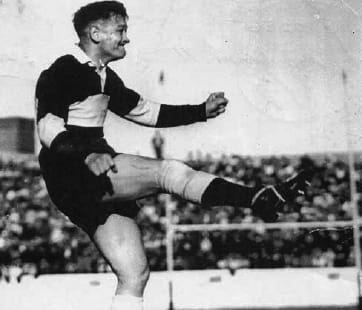
Bill played with Western Suburbs from 1938 till 1950. A goal-kicking fullback he played 119 First Grade games for the Magpies. He scored 787 points to become Wests’ all-time First Grade top point-scorer and goal-kicker. Roy Masters said of Keato, “A prodigious goalkicker, Keato booted what were called “flag waggers” from the sideline and halfway, often in the mud and against the wind, in the 1938-to-1950 era, when goals, rather than tries, decided games.” He also said Keato, “won more matches for the Magpies than any other player”.
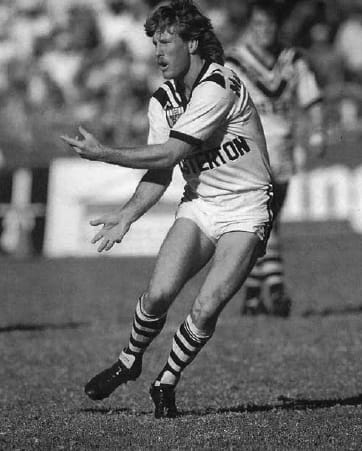
He played 161 first grade games in First Grade for the Magpies, the fifth most capped player for the club. Cogger also holds the club record for most appearances in all grades (317) and has scored the most tries for the club in all grades, 90, eclipsing Peter Dimond’s previous record. He was known as the Ultimate Clubman and helped bridge the journey of the club from Lidcombe to Campbelltown.
INDUCTED IN
2012
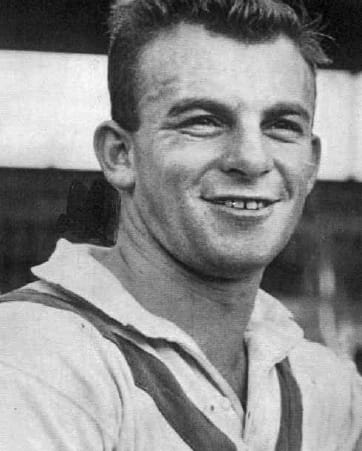
A 1948 Premiership player, Stanmore was a crafty five-eighth. In 1952, representative duties for Australia meant he couldn’t play in the premiership team, but he is one of the few to taste premiership glory at the club. He played 87 games for the club, scored 23 tries and be inducted into the Hall of Fame during 2012.

An exciting attacking fullback or centre, with an outstanding sidestep, Wayne Smith played from 1976-1984, scoring 64 tries in his 230 club games for Western Suburbs. Wayne’s 161 First Grade games ranks him fifth on the all-time list. Wayne’s brothers, Rod and Bob also played first grade for the Magpies and their father Alec was named as coach of Enfield Federals’ Team of the Century.

Clarrie was an Australian Rugby Union and Rugby League footballer who represented his country at both sports – a dual-code Rugby International. Both his brothers, Ward Prentice and Archie Prentice also played for Wests His international rugby league debut against New Zealand in Wellington on 23 August 1919 alongside Claud O’Donnell saw them become Australia’s 20th and 21st dual code rugby internationals.
Clarrie was selected on the 1921–22 Kangaroo tour of Great Britain. He played in all three Tests of the tour and in 22 other tour matches for Australia. He coached the Magpies in the 1927 NSWRFL season.
